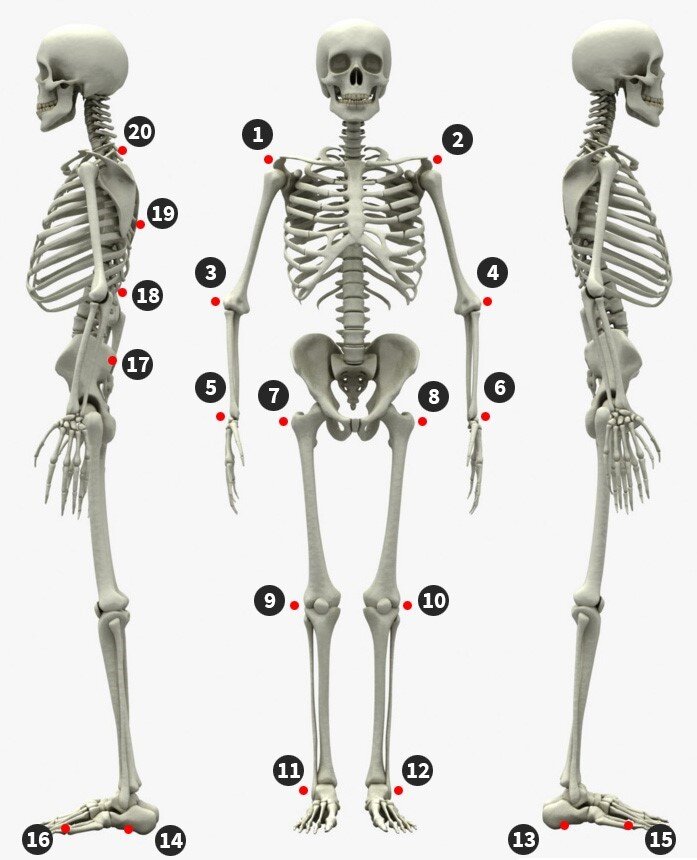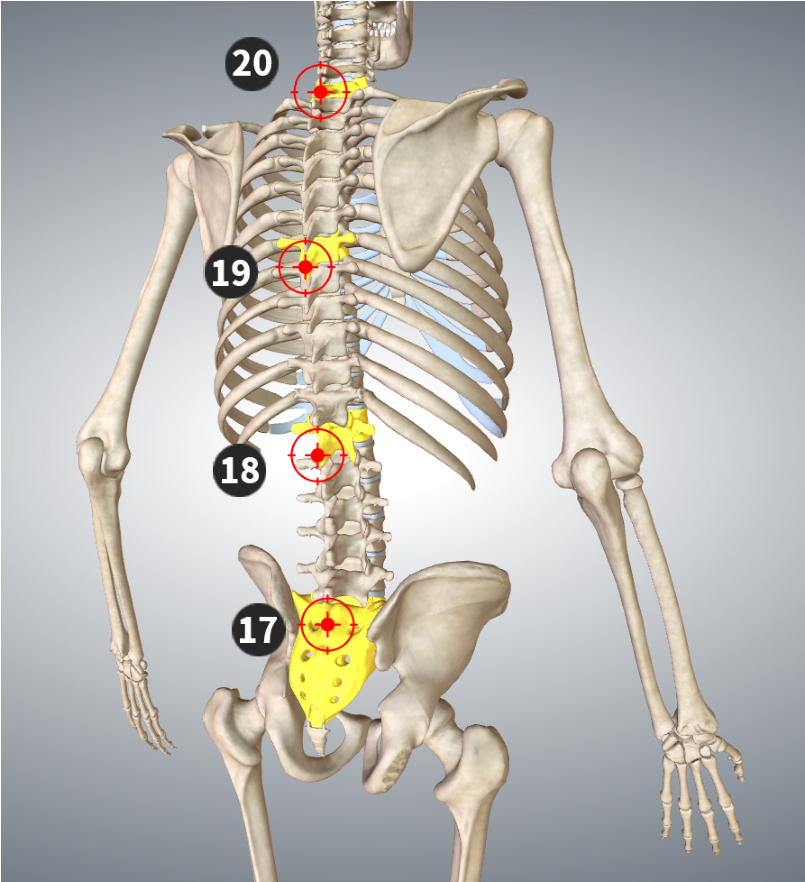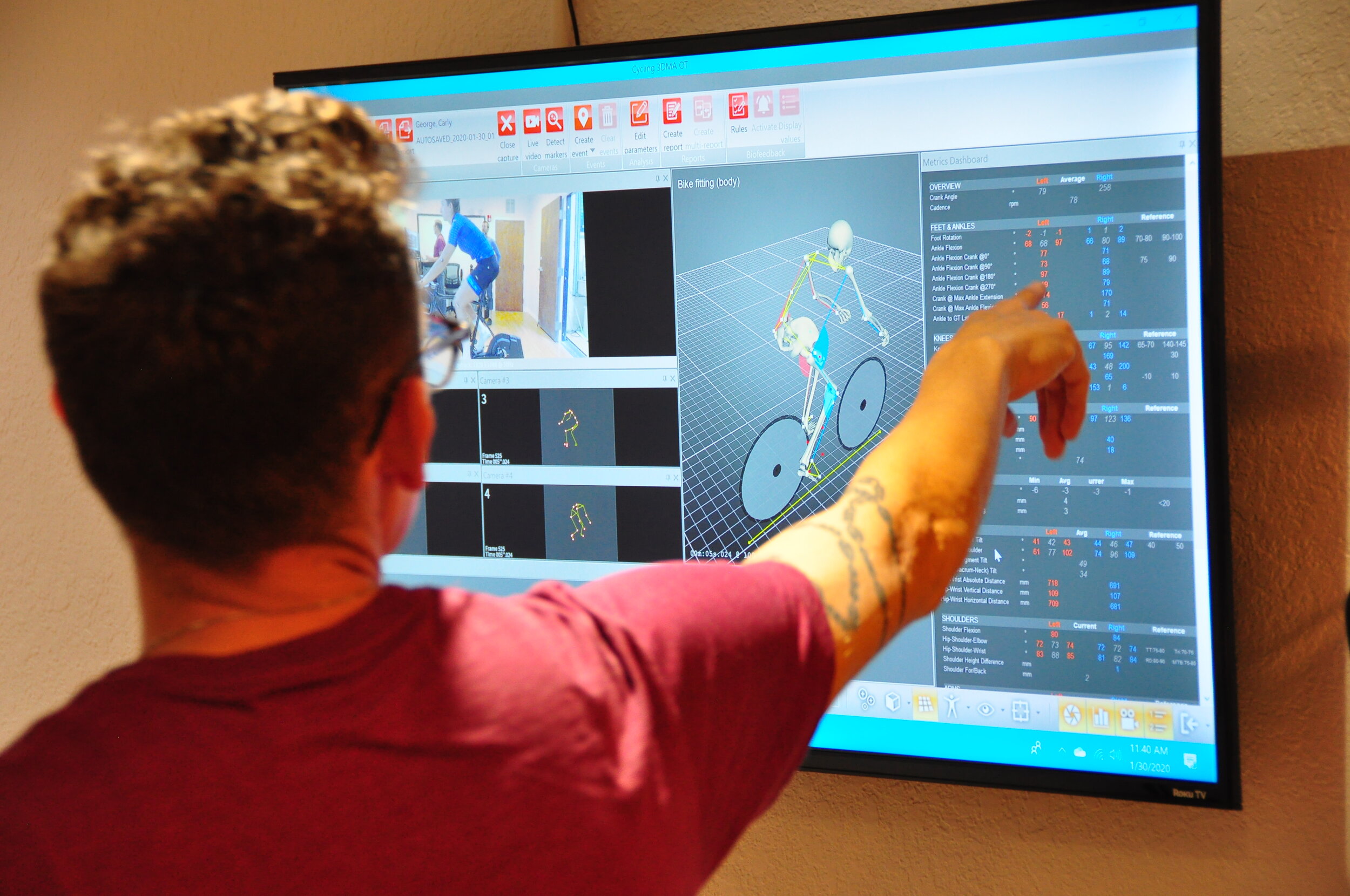Motion Capture and why we chose what we did
What is motion capture?
In the simplest of terms motion capture is the process of recording the movement of objects or people. In cycling, and more specifically bike fitting, we use motion capture technology to aid in the bike fit process. During your fit we use special markers placed on specific anatomical joints in the body to monitor your form while riding and how changes in the set-up of your bike impact that form. As your body’s motion is captured and tracked on our software the fitter is able to make more informed decisions on which changes should be made and to see things that the naked eye alone would have missed.
Most have probably heard of Retul; the most popular system on the market. Retul is a very robust system that gives great results and has a strong backing. So, why didn’t we go with Retul and what did we decide on? After much research and deliberation, we went with a motion capture by Spanish company STT Systems called 3dma. 3dma functions very similarly to Retul, both capture joints and angles of a rider while in motion, however 3dma allowed us significantly more flexibility during implementation and the potential to expand into other sports in the future.
Marker Placement for cyclist tracking
Markers and joints captured
Our 3dma implementation allows us to capture the whole body at once instead of being limited to capturing just one side at a time. This is important since changes made to improve form on one side of the body may also affect the other side either positively or negatively. We can see the impact of these changes in real time without moving the rider and running another capture, this removes the potential for human error when replacing the markers on the other side of the rider.
Now a good fitter should have no problems with performing this task but removing the potential of error is always a good thing in our eyes and results in a more efficient and streamlined process. In addition, 3dma allows the fitter to see pelvis and back rotation ordinarily not possible. The pelvis and hips are the foundation of a good riding position since a cyclist’s power is created from the hips and driven down the leg through the pedal. Achieving the optimal hip position lets us create and utilize power more efficiently and without loading muscles or joints in an improper or unsafe manner.
Back markers for monitoring position
Software and expand-ability
Perhaps the largest driver for us was 3dma’s software flexibility and future expandability. The software allows us to customize the data and visualize the rider in motion. We can watch a 3-D representation of the rider on screen while they pedal showing the joints and how they’re moving through space making it easier on the fitter to identify issues or unwanted movement. We can also visualize joint movement through several customizable graphs allowing us to focus in on a specific area and see how an adjustment to the bike or rider affected something.
Perhaps more than anything we love the future expandability of the system. We have the ability to capture more sports than we could ever want to. We are particularly excited by the prospect of offering gait analysis for runners in the future. We hope to be able to offer analysis for runners and triathletes, helping them improve efficiency or identify an issue with their running form that may be causing a nagging injury. We would then be able to prescribe exercises and queues to focus on allowing the athlete to perform at the level they’re capable of.
The Fitter, the most important piece
This post has gone into the details of the bike fit and how it allows us to optimize our process, however I still want to stress that the most important piece of this puzzle is the fitter. Technology is useless without a knowledgeable user behind it. Numbers and angles mean nothing if we cannot interpret their significance and the impact they have on rider comfort, efficiency and longevity. .
At the end of the day it’s about the fitter using the technology as an aid to getting the rider in the best possible riding position for them. We like to think of technology as an assistant; highlighting details and intricacies that can’t always been seen by the eye. So if you’re trying to decide on where to get fit remember that the system in use is only one part of the equation and the person driving the software is what matters most.





